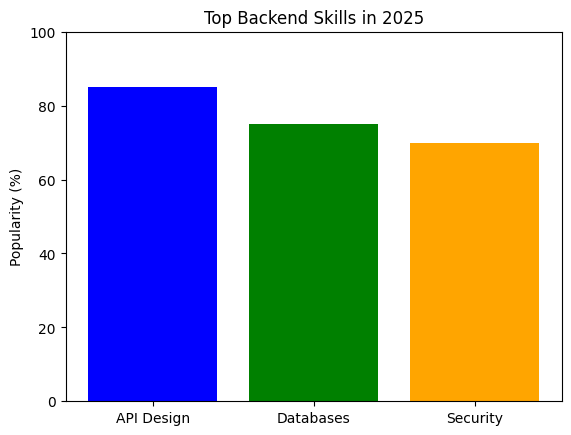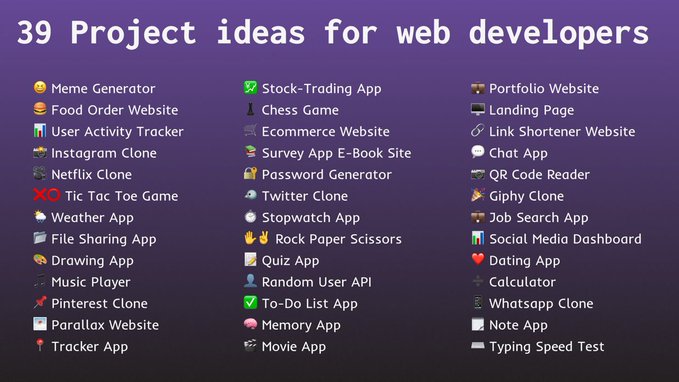INTRODUCTION:

As a backend engineer, your role is crucial in building robust, scalable, and efficient systems that power modern applications. In this comprehensive guide, we’ll explore the essential skills, tools, and best practices required to excel in backend engineering.
API Design & REST:
API design is a critical aspect of backend engineering. REST (Representational State of Resource) is a popular architectural style for designing networked applications. A well-designed API should be intuitive, scalable, and easy to use.
- Key concepts: Resources, HTTP methods, API endpoints, request and response bodies.
- Best practices: Use meaningful resource names, follow HTTP method conventions, and implement proper error handling.
To explore the core components of backend engineering, such as APIs and database management, see InterviewKickstart’s guide on Mastering Backend Engineering Fundamentals.
Databases:
Databases are the backbone of most applications, storing and managing data efficiently. As a backend engineer, you should be familiar with various database types, including:
- Relational databases: PostgreSQL, MySQL
- NoSQL databases: MongoDB, Cassandra
- Key concepts: Data modeling, schema design, querying, indexing.
Authentication & Authorization:
Security is a top priority in backend engineering. Implementing robust authentication and authorization mechanisms ensures that sensitive data is protected.
- Key concepts: Authentication protocols (OAuth, JWT), authorization frameworks (RBAC, ACL).
- Best practices: Use secure password storage, implement rate limiting, and validate user input.
For a step-by-step guide on mastering backend development skills, check out GeeksforGeeks’ Backend Developer Roadmap 2025.
Background Jobs & Queues:
Background jobs and queues help manage tasks that require processing in the background, improving system performance and responsiveness.
- Key concepts: Job queues, worker processes, message brokers (RabbitMQ, Apache Kafka).
- Best practices: Use message queues to decouple systems, implement retries and timeouts.
Docker & CI/CD:
Containerization using Docker and Continuous Integration/Continuous Deployment (CI/CD) pipelines streamline the development and deployment process.
- Key concepts: Docker containers, Dockerfile, CI/CD pipelines (Jenkins, GitLab CI/CD).
- Best practices: Use Docker for consistent environments, implement automated testing and deployment.
Cloud:
Cloud platforms provide scalable infrastructure for deploying and managing applications.
- Key concepts: Cloud providers (AWS, Azure, GCP), virtual machines, storage, and databases.
- Best practices: Use cloud services for scalability, implement cost monitoring and optimization.
Caching:
Caching improves system performance by reducing the load on databases and other resources.
- Key concepts: Caching strategies (read-through, write-through), caching tools (Redis, Memcached).
- Best practices: Use caching for frequently accessed data, implement cache invalidation.
Observability & Logging:
Monitoring and logging are crucial for identifying issues and improving system reliability.
- Key concepts: Logging frameworks (ELK Stack, Splunk), monitoring tools (Prometheus, Grafana).
- Best practices: Implement centralized logging, use monitoring tools for alerting and analytics.
System Design:
System design involves creating scalable and efficient systems that meet business requirements.
- Key concepts: System architecture, scalability, performance optimization.
- Best practices: Use design patterns and principles (SOLID, DRY), implement load balancing and caching.
Programming Languages:
As a backend engineer, you should be proficient in one or more programming languages, including:
- Python: A popular language for backend development.
- Go: A modern language for building scalable and concurrent systems.
- JavaScript: Used for backend development with technologies like Node.js.
Get Started with Backend Engineering:
Whether you’re a seasoned developer or just starting out, backend engineering offers a wide range of opportunities. To take your skills to the next level, explore our products and resources:
- Backend development courses: Learn the fundamentals of backend engineering and stay up-to-date with the latest trends.
- API design tools: Streamline your API development process with our intuitive tools.
- Cloud hosting services: Deploy and manage your applications with our scalable cloud infrastructure.
Want To Know More About:
Unlock The Secrets Of CSS: A Beginner’s Guide To Learning CSS From Scratch.
Unlock The Power Of JavaScript: A Beginner’s Guide To Learning JavaScript From Scratch
60 AI Tools To Start Your Profitable Online Business In 2025.
Conclusion:
Mastering backend engineering skills in 2025 demands a blend of technical expertise and adaptability to stay ahead in a rapidly evolving field.
By honing proficiency in modern frameworks, cloud technologies, secure API design, and DevOps practices, while embracing emerging trends like AI integration and event-driven systems, engineers can build robust, scalable solutions that meet future demands. Coupled with strong problem-solving and collaboration skills, these competencies will empower backend engineers to drive innovation and thrive in the dynamic tech landscape of 2025 and beyond.
Disclosure/Disclaimer:
This article contains affiliate links, supporting our educational and informative contents creation.
We appreciate supporting us to create more value and fascinating contents here on our site for educational purposes only.
